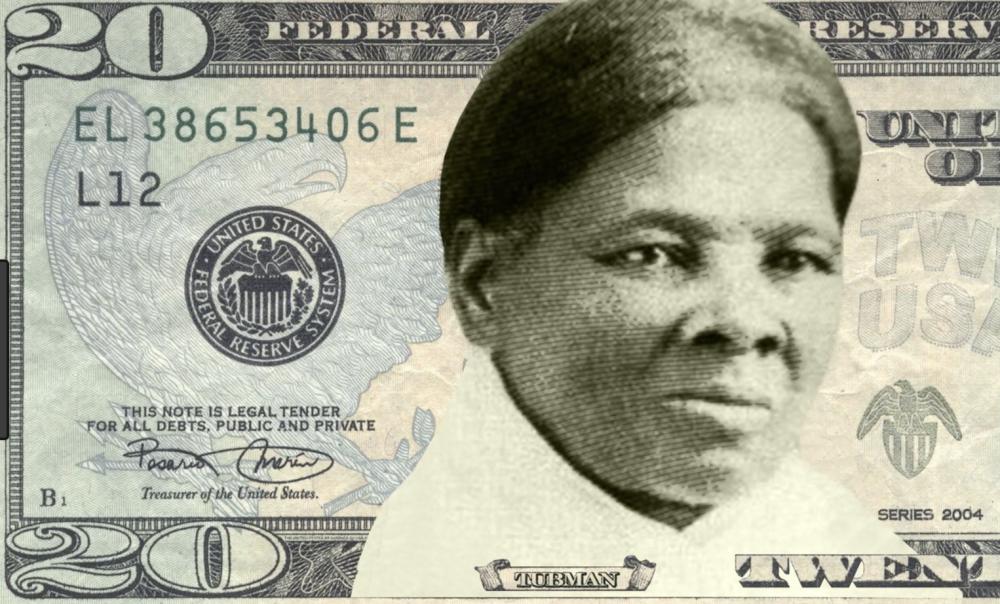U.S. Treasury Secretary Steve Mnuchin’s decision to delay the placement of Harriet Tubman–an American hero and Dorchester County native who led hundreds of slaves to safety through the Underground Railroad–on the $20 bill represents a shameless decision by the Trump Administration to disregard a courageous woman and African-American icon.
Mnuchin claimed it was more important to redesign the $10 and $50 bills first for security reasons, to prevent counterfeiting. The Tubman redesign, already moving toward completion, according to news accounts, was slated to appear in 2020, the 100th anniversary of suffrage. Her image was to replace President Andrew Jackson’s.
Tubman would have become the first woman on American paper currency.
Combating what he considers “political correctness” has become the battle cry for Trump. It underscores the president’s reluctance to condemn the white supremacists who protested in Charlottesville VA in August 2017, leaving one woman, a bystander, dead in the confrontation.
While some may argue that an image on a $1 or $5 or $10 or $20 or $50 bill makes no difference when you’re reaching into your wallet to buy groceries or a beverage in a convenience store, I believe that symbolism is important. It projects not only an image of a hero or a nation-founder–but highlights what we Americans consider as cherished values we wish to honor.
For example, the image of Abraham Lincoln on the well-used $5 bill reflects what he meant in preserving our united country when it was falling apart and fracturing itself over slavery and state’s rights during a disastrous Civil War. His political resilience and strong resolve enabled him to withstand personal attacks, Union defeats early-on and an unconscionable war on our own turf.
Gracing our ubiquitous $1 bill, George Washington represented our young nation’s character and gumption in rebelling against British rule and establishing a country free to determine its own future. He embodied integrity and common sense.
Harriet Tubman should be on the $20 bill. Now.
The decision to delay a redesign to 2026 or 2028 once his boss is out of office—assuming he wins reelection in 2020—smacks of cynical decision-making. He wanted to avoid a temper tantrum by his boss in the White House. He wanted to deflect criticism by Trump’s conservative base against what it might consider undue political correctness.
Trump’s fondness for the populist Jackson is well-known. A slave owner, Jackson was responsible too for the 1830 Indian Removal Act, which pushed more than 60,000 Native Americans from their lands and onto the infamous Trail of Tears.
Tubman continually risked her life to lead slaves to freedom, to shake the yoke of oppression. She freed herself in 1849. Over 11 years she helped hundreds gain their independence from bondage.
During the Civil War, she was a Union spy whose most notable achievement was the liberation of 756 people in one day in a raid on the Combahee River in South Carolina that destroyed four of the Confederacy’s most successful plantations and resulted in recruiting more than 200 black men into the army.
Though we have become accustomed to Trump’s decisions that forsake decency and compassion, I find the delay for seven to nine years of placement of Tubman’s image on the $20 bill an appalling insult to women and the African-American community.
Slavery is an indelible stain on our national legacy. Recognition of Harriet Tubman, who freed herself and then hundreds of others from the physical and mental imprisonment of slavery on the Eastern Shore of Maryland, would place an uneducated, determined black woman in the pantheon of American heroes. She belongs there.
Mnuchin’s decision was disgraceful. Unfortunately, it wasn’t surprising.
Embrace of our “better angels” is an elusive quality in the Trump Administration.



Deirdre LaMotte says
I agree totally. Anyone depicted on paper currency should
be a person of great deeds and character; a national treasure.
A woman I so admire who happens to be my great-great grandmother made it her mission to campaign against
Andrew Jackson’s Presidency and all it represented. Mary Chase Barney edited a political
periodical in the early 1800s that was aimed at getting women
educated and involved in current affairs. Her focus for some time was to exposed Jackson and his many conflicts of interest. John Adams son
used her written pieces in his run for the Presidency and to highlight
Jackson’s lack of character. Not so funny that the present occupant of
the White House has put this man’s portrait in the Oval. Actually, makes total sense.
Howard Freedlander says
Alarming likeness in character between AJ and DT…Mary Chase Barney was spot-on in her opposition to Trump’s hero and her support of women’s equality.